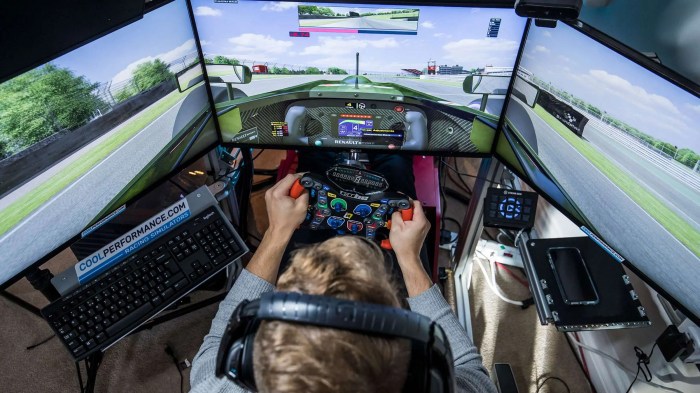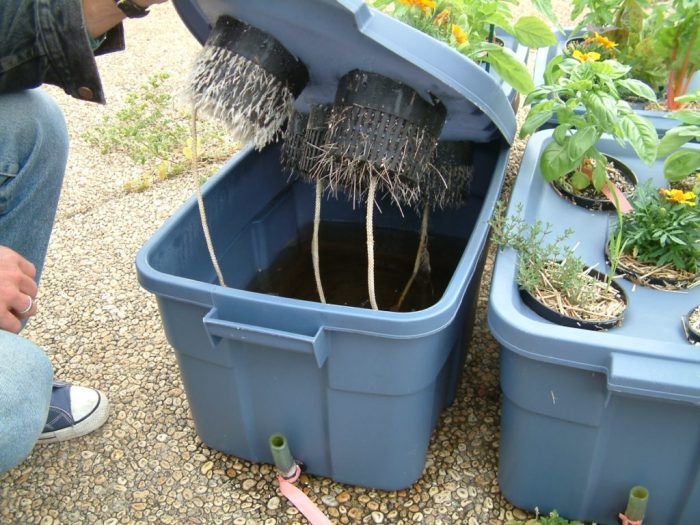
DIY Sim Rig: The thrill of racing comes alive with the ability to build your own simulator rig. This is a world where passion meets engineering, where virtual laps transform into tangible experiences.
Dive into the world of DIY Sim Racing, where you can craft a personalized setup that caters to your specific needs and desires. From selecting the perfect components to assembling a sturdy frame, every step in this journey is a testament to your creativity and skill.
Introduction to DIY Sim Racing

DIY Sim Racing, or building your own simulator racing rig, is a popular and rewarding hobby that allows enthusiasts to experience the thrill of racing from the comfort of their homes. The appeal lies in the ability to customize and personalize the setup to meet individual needs and preferences, offering a unique and immersive racing experience.
Building a DIY Sim Rig offers several advantages over purchasing a pre-built system. It provides greater flexibility in terms of component selection, allowing for a tailored setup that perfectly aligns with your budget and desired features. Moreover, the hands-on building process itself can be an enjoyable and educational experience, fostering a deeper understanding of the technology involved.
Popular DIY Sim Racing Setups
Building a DIY Sim Rig involves selecting and assembling various components, including a racing seat, steering wheel, pedals, shifter, and a display system. These components can be sourced from a wide range of manufacturers and retailers, catering to different budgets and performance levels.
Here are some examples of popular DIY Sim Racing setups:
- Basic Setup: A basic setup typically includes a budget-friendly racing seat, a steering wheel and pedal set, and a monitor. This is a great starting point for beginners and those on a tighter budget. For example, a Logitech G29 steering wheel and pedals paired with a Playseat Challenge racing seat and a 24-inch monitor can provide a satisfying racing experience.
- Mid-Range Setup: A mid-range setup upgrades the components with higher-quality options, offering improved realism and immersion. This might include a Fanatec CSL Elite steering wheel and pedals, a Playseat Evolution racing seat, and a 27-inch curved monitor. The enhanced components provide a more precise and responsive driving experience.
- High-End Setup: A high-end setup utilizes top-of-the-line components, offering the ultimate in realism and immersion. This might include a Simucube 2 Pro direct drive steering wheel, a Heusinkveld Sprints pedals, a Sparco Pro racing seat, and a triple-monitor setup with high refresh rate displays. This setup delivers an unparalleled level of detail and feedback, replicating the feel of a real race car.
Choosing the Right Components: Diy Sim Rig

Building a DIY sim rig requires careful consideration of the components you choose, as they directly impact the overall experience and performance. The right components will provide a realistic and immersive racing simulation, while the wrong ones can lead to frustration and a subpar experience. This section will guide you through the process of selecting the essential components, including steering wheels, pedals, and a stable and adjustable frame.
Steering Wheel and Pedals, Diy sim rig
Choosing the right steering wheel and pedals is crucial for a realistic and engaging sim racing experience. The steering wheel should provide accurate feedback and realistic force feedback, while the pedals should offer precise control and responsiveness. Here’s a guide to selecting suitable options:
Steering Wheel
- Wheel Type: Steering wheels come in various types, each offering unique features and advantages.
- Direct Drive Wheels: These wheels offer the most realistic and precise feedback, simulating the actual feel of driving. They are generally more expensive but provide an unmatched level of immersion.
- Belt Driven Wheels: Belt-driven wheels provide a good balance between realism and affordability. They offer a smoother and quieter experience compared to gear-driven wheels.
- Gear Driven Wheels: These wheels are the most affordable option but offer a less realistic and sometimes noisy experience.
- Force Feedback: Force feedback simulates the forces experienced while driving, such as road bumps, tire slip, and cornering. It enhances the realism and immersion of the simulation. Look for wheels with strong and responsive force feedback, ensuring accurate and detailed feedback.
- Buttons and Switches: The number and placement of buttons and switches are important for controlling various functions within the game. Consider a wheel with a sufficient number of buttons and switches for your preferred racing games.
- Compatibility: Ensure the steering wheel is compatible with your chosen sim racing platform (PC, PlayStation, Xbox).
Pedals
- Pedal Type: Pedals come in various types, offering different levels of realism and features.
- Load Cell Brake: Load cell brakes use a sensor to measure the force applied to the brake pedal, providing a more realistic and consistent braking experience.
- Potentiometer Brakes: Potentiometer brakes use a variable resistor to measure pedal position, offering a less realistic but more affordable option.
- Pedal Travel: The distance the pedal travels before fully activating is important for achieving precise control. Look for pedals with a suitable travel distance for your preferred driving style.
- Pedal Feel: The feel of the pedals is crucial for a realistic and comfortable experience. Some pedals offer adjustable pedal feel, allowing you to customize the experience to your preference.
- Compatibility: Ensure the pedals are compatible with your chosen steering wheel and sim racing platform.
Frame
The frame is the foundation of your sim rig, providing stability and adjustability. A stable frame ensures smooth and accurate movements, while adjustability allows you to customize the rig to your height and driving position.
- Stability: A sturdy and rigid frame is essential for minimizing vibrations and ensuring smooth and accurate movements. Look for a frame made from high-quality materials like steel or aluminum, and consider the weight capacity to ensure it can handle the weight of your components.
- Adjustability: An adjustable frame allows you to customize the rig to your height, driving position, and preferences. Consider features like adjustable seat position, steering wheel angle, and pedal distance.
- Compatibility: Ensure the frame is compatible with your chosen steering wheel, pedals, and seat.
Building a DIY Sim Rig is not just about creating a gaming setup, it’s about embarking on a journey of personalization, innovation, and pure racing exhilaration. So, gear up, get your hands dirty, and build the ultimate sim racing experience – one that reflects your passion and your vision.
Building a DIY sim rig can be a fun and rewarding project, allowing you to customize your racing experience. Just like building a DIY sim rig, creating a DIY pool towel rack is a simple and satisfying project. You can find great inspiration for a DIY pool towel rack here , which can be a great way to add a touch of personality to your pool area.
With a little creativity and some basic tools, you can build your own unique and functional towel rack, just like you can create a customized and immersive racing environment with your DIY sim rig.


